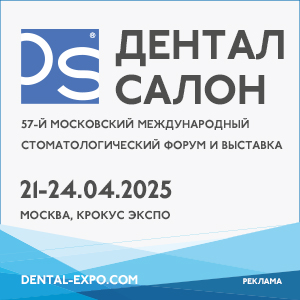DOI:
10.37988/1811-153X_2024_2_76Antimicrobial activity of novel curcumin-based photosensitizer in liposomal form against Staphylococcus aureus strain: in vitro study
Downloads
Abstract
Photodynamic therapy (PDT) is applied in many medical fields. It is based on photosensitizer (PS) delivery within pathological cells and subsequent irradiation of appropriate laser leading to selective cell death. The creation of such forms of photosensitizers providing most efficient PS delivery into the cell is still relevant. The novel liposomal form which increases the bioavailability of curcumin-based photosensitizer is developed.Materials and methods.
Antimicrobial activity of PS in liposomal form with curcumin at a concentration of 1% (group I) and 2% (group II) after 445 nm laser exposure against S. aureus strain has been analyzed during the research. The degree of photobleaching of the cell culture was assessed, and the optical density of the microbial mixture was measured after irradiation during 48-hour cultivation.
Results.
The photobleaching level of group II exceeded the threshold of 50% and reached 54.2±0.4%, which is significantly more than 30.2±0.2% for the sample of group I. When cultivating a pure culture the optical density of the microbial suspension at the development point α (10th hour) was 4.3±0.3 MFU, at the development point β (12th hour) — 5±0.3 MFU. When cultivating a sample of group I the optical density of the microbial suspension at the development point α (10th hour) was 3.54 MFU, at the development point β (12th hour) — 4.76 MFU. For group II the optical density of the microbial suspension at the development point α (12th hour) was 3.4 MFU, at the development point β (14th hour) — 4.0 MFU, which is statistically significantly lower than in group I.
Conclusion.
Photoactivation of PS with 2% curcumin in liposomes by laser radiation leads to a more pronounced decrease in the intensity of microorganism growth compared to PS with 1% curcumin. The effect of laser on PS with 2% curcumin triggers more active processes of microbial cell death. The novel liposomal form of PS with curcumin has shown its promise for further investigation and implementation in dental clinical practice.
Key words:
photosensitizer, curcumin, liposomes, fluorescence spectroscopyFor Citation
[1]
Chausskaya I.Yu., Drobyshev A.Yu., Nikogosova D.E., Tsarev V.N., Podporin M.S., Amrieva M.S., Kirilenko V.V., Kulichenko A.M., Saberov R.Z. Antimicrobial activity of novel curcumin-based photosensitizer in liposomal form against Staphylococcus aureus strain: in vitro study. Clinical Dentistry (Russia). 2024; 27 (2): 76—82. DOI: 10.37988/1811-153X_2024_2_76
References
- Chau L., Jabara J.T., Lai W., Svider P.F., Warner B.M., Lin H.S., Raza S.N., Fribley A.M. Topical agents for oral cancer chemoprevention: A systematic review of the literature. Oral Oncol. 2017; 67: 153—159. PMID: 28351570
- Naumovich S., Plavsky V., Kuvshinov A. Antimicrobial photodynamic therapy: advantages, disadvantages and development prospects. Sovremennaya stomatologiya (Belarus). 2020; 1 (78): 11—16 (In Russian). eLIBRARY ID: 42642360
- Warrier A., Mazumder N., Prabhu S., Satyamoorthy K., Murali T.S. Photodynamic therapy to control microbial biofilms. Photodiagnosis Photodyn Ther. 2021; 33: 102090. PMID: 33157331
- de Souza da Fonseca A., de Paoli F., Mencalha A.L. Photodynamic therapy for treatment of infected burns. Photodiagnosis Photodyn Ther. 2022; 38: 102831. PMID: 35341978
- Kolarikova M., Hosikova B., Dilenko H., Barton-Tomankova K., Valkova L., Bajgar R., Malina L., Kolarova H. Photodynamic therapy: Innovative approaches for antibacterial and anticancer treatments. Med Res Rev. 2023; 43 (4): 717—774. PMID: 36757198
- Chen T., Yang D., Lei S., Liu J., Song Y., Zhao H., Zeng X., Dan H., Chen Q. Photodynamic therapy-a promising treatment of oral mucosal infections. Photodiagnosis Photodyn Ther. 2022; 39: 103010. PMID: 35820633
- Potapovich A.I., Yassen A.T., Kostyuk V.A. The natural chemopreventive agent curcumin can function as an effective UV photosensitizer. In: abstracts of the “Physical and chemical biology as the basis of modern medicine” conference. Minsk: Belorussian State Medical University, 2021. Pp. 230—232 (In Russian). https://tinyurl.com/4becb68e
- Utz S.R., Talnikova E.E., Sultanakhmedov E.S., Myasnikova T.D., Safonov V.A., Popovicheva O.A. Nail psoriasis: the first experience of photodynamic curcumin therapy. Saratov Journal of Medical Scientific Research. 2017; 3: 600—604 (In Russian). eLIBRARY ID: 32484250
- Mirzaei H., Shakeri A., Rashidi B., Jalili A., Banikazemi Z., Sahebkar A. Phytosomal curcumin: A review of pharmacokinetic, experimental and clinical studies. Biomed Pharmacother. 2017; 85: 102—112. PMID: 27930973
- Gandek T.B., van der Koog L., Nagelkerke A. A comparison of cellular uptake mechanisms, delivery efficacy, and intracellular fate between liposomes and extracellular vesicles. Adv Healthc Mater. 2023; 12 (25): e2300319. PMID: 37384827
- Jaudoin C., Grillo I., Cousin F., Gehrke M., Ouldali M., Arteni A.A., Picton L., Rihouey C., Simelière F., Bochot A., Agnely F. Hybrid systems combining liposomes and entangled hyaluronic acid chains: Influence of liposome surface and drug encapsulation on the microstructure. J Colloid Interface Sci. 2022; 628 (Pt B): 995—1007. PMID: 36041247
- Sheikholeslami B., Lam N.W., Dua K., Haghi M. Exploring the impact of physicochemical properties of liposomal formulations on their in vivo fate. Life Sci. 2022; 300: 120574. PMID: 35469915
- Ghodasara A., Raza A., Wolfram J., Salomon C., Popat A. Clinical translation of extracellular vesicles. Adv Healthc Mater. 2023; 12 (28): e2301010. PMID: 37421185
- Akkewar A., Mahajan N., Kharwade R., Gangane P. Liposomes in the targeted gene therapy of cancer: A critical review. Curr Drug Deliv. 2023; 20 (4): 350—370. PMID: 35593362
- Raza F., Evans L., Motallebi M., Zafar H., Pereira-Silva M., Saleem K., Peixoto D., Rahdar A., Sharifi E., Veiga F., Hoskins C., Paiva-Santos A.C. Liposome-based diagnostic and therapeutic applications for pancreatic cancer. Acta Biomater. 2023; 157: 1—23. PMID: 36521673
- Salkho N.M., Awad N.S., Pitt W.G., Husseini G.A. Photo-induced drug release from polymeric micelles and liposomes: Phototriggering mechanisms in drug delivery systems. Polymers (Basel). 2022; 14 (7): 1286. PMID: 35406160
Downloads
Received
November 4, 2023
Accepted
April 11, 2024
Published on
June 28, 2024











